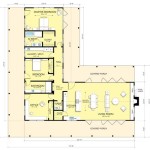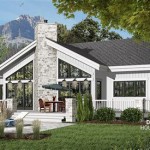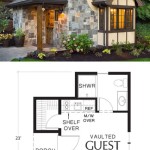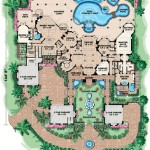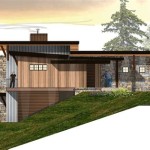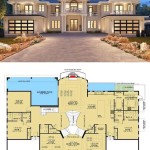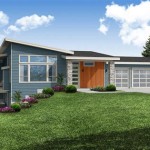Dog house design plans provide detailed instructions and specifications for constructing a dog house, a small, enclosed structure that serves as a sheltered and protective space for dogs. These plans typically include measurements, materials lists, and step-by-step instructions for building the dog house.
Dog house design plans are essential for ensuring that the dog house is suitable for the dog’s size, climate, and needs. By using a well-designed plan, dog owners can create a comfortable and durable shelter for their pet. Dog house design plans can be found online, in home improvement stores, and in some pet supply stores.
In the following sections, we will discuss the different types of dog house design plans available, the factors to consider when choosing a plan, and the steps involved in building a dog house using a design plan.
When choosing a dog house design plan, there are several important points to consider:
- Dog size
- Climate
- Materials
- Construction skills
- Cost
- Style
- Ventilation
- Durability
By considering these factors, dog owners can choose a plan that will result in a dog house that is comfortable, durable, and aesthetically pleasing.
Dog size
The size of the dog is the most important factor to consider when choosing a dog house design plan. The dog house should be large enough for the dog to stand up, turn around, and lie down comfortably. However, it should not be so large that the dog’s body heat cannot warm the space efficiently.
- Small dogs: Small dogs, such as Chihuahuas and Yorkshire Terriers, need a dog house that is at least 24 inches long, 18 inches wide, and 18 inches high.
For example, a 2-foot by 2-foot dog house with a height of 2 feet would be a good choice for a small dog.
- Medium dogs: Medium dogs, such as Beagles and Bulldogs, need a dog house that is at least 30 inches long, 24 inches wide, and 24 inches high.
For example, a 3-foot by 2-foot dog house with a height of 2 feet would be a good choice for a medium dog.
- Large dogs: Large dogs, such as German Shepherds and Golden Retrievers, need a dog house that is at least 36 inches long, 30 inches wide, and 30 inches high.
For example, a 4-foot by 3-foot dog house with a height of 3 feet would be a good choice for a large dog.
- Extra-large dogs: Extra-large dogs, such as Great Danes and Mastiffs, need a dog house that is at least 48 inches long, 36 inches wide, and 36 inches high.
For example, a 6-foot by 4-foot dog house with a height of 4 feet would be a good choice for an extra-large dog.
It is important to note that these are just general guidelines. The best way to determine the right size for your dog is to measure your dog and add a few inches to each measurement.
Climate
The climate in which the dog house will be used is another important factor to consider when choosing a design plan. Dog houses must be designed to protect dogs from the elements, including rain, snow, wind, and sun.
Cold climates: Dog houses for cold climates should be well-insulated to keep dogs warm. They should also have a sloped roof to prevent snow from accumulating on top of the house. In addition, the entrance to the dog house should be small and face away from the prevailing wind.
Warm climates: Dog houses for warm climates should be well-ventilated to keep dogs cool. They should also have a light-colored roof to reflect the sun’s heat. In addition, the entrance to the dog house should be large and face towards the prevailing wind.
Rainy climates: Dog houses for rainy climates should be waterproofed to prevent water from leaking into the house. They should also have a sloped roof to prevent water from pooling on top of the house. In addition, the entrance to the dog house should be covered to prevent rain from blowing into the house.
Snowy climates: Dog houses for snowy climates should be able to withstand heavy snow loads. They should also have a sloped roof to prevent snow from accumulating on top of the house. In addition, the entrance to the dog house should be large enough for dogs to easily enter and exit the house, even when there is snow on the ground.
By considering the climate in which the dog house will be used, dog owners can choose a design plan that will result in a dog house that is comfortable and durable.
Materials
The materials used to build a dog house will depend on the climate in which the dog house will be used, the size of the dog, and the budget of the dog owner. However, there are some general guidelines that can be followed when choosing materials for a dog house.
Walls: The walls of a dog house can be made from a variety of materials, including wood, plastic, and metal. Wood is a popular choice because it is durable, affordable, and easy to work with. However, wood must be treated to protect it from rot and decay. Plastic is another popular choice because it is waterproof and easy to clean. However, plastic can be more expensive than wood and may not be as durable. Metal is a good choice for dog houses that will be used in cold climates because it is strong and durable. However, metal can be more expensive than wood or plastic and may be more difficult to work with.
Roof: The roof of a dog house can be made from a variety of materials, including asphalt shingles, metal roofing, and wood shingles. Asphalt shingles are a popular choice because they are affordable and easy to install. However, asphalt shingles may not be as durable as metal roofing or wood shingles. Metal roofing is a good choice for dog houses that will be used in cold climates because it is strong and durable. However, metal roofing can be more expensive than asphalt shingles or wood shingles. Wood shingles are a good choice for dog houses that will be used in warm climates because they are lightweight and help to keep the dog house cool. However, wood shingles may not be as durable as asphalt shingles or metal roofing.
Floor: The floor of a dog house can be made from a variety of materials, including wood, concrete, and tile. Wood is a popular choice because it is durable and easy to clean. However, wood must be treated to protect it from rot and decay. Concrete is a good choice for dog houses that will be used in cold climates because it is strong and durable. However, concrete can be cold and uncomfortable for dogs to lie on. Tile is a good choice for dog houses that will be used in warm climates because it is cool and easy to clean. However, tile can be more expensive than wood or concrete.
Insulation: Insulation can be added to the walls and roof of a dog house to help keep the dog warm in cold climates. Insulation can be made from a variety of materials, including fiberglass, cellulose, and spray foam. Fiberglass is a popular choice because it is affordable and easy to install. However, fiberglass can be itchy and irritating to the skin. Cellulose is a good choice for dog houses that will be used in cold climates because it is effective at insulating and is not itchy or irritating to the skin. Spray foam is a good choice for dog houses that will be used in warm climates because it is lightweight and helps to keep the dog house cool. However, spray foam can be more expensive than fiberglass or cellulose.
Construction skills
The construction skills required to build a dog house will vary depending on the complexity of the design plan. However, there are some general skills that all dog house builders should have.
- Basic carpentry skills: Dog house builders should be able to measure, cut, and assemble wood. They should also be able to use basic power tools, such as a saw, drill, and sander.
- Roofing skills: Dog house builders should be able to install roofing material, such as asphalt shingles or metal roofing. They should also be able to flash around the edges of the roof to prevent leaks.
- Insulation skills: Dog house builders should be able to install insulation in the walls and roof of the dog house. Insulation helps to keep the dog warm in cold climates and cool in warm climates.
- Weatherproofing skills: Dog house builders should be able to weatherproof the dog house to protect it from the elements. This may involve sealing the seams of the dog house with caulk or weatherstripping.
If you do not have the necessary construction skills to build a dog house, you can hire a contractor to do the work for you. However, it is important to make sure that the contractor is experienced in building dog houses and that they have a good reputation.
Cost
The cost of building a dog house will vary depending on the size of the dog house, the materials used, and the complexity of the design. However, there are some general guidelines that can be followed to estimate the cost of building a dog house.
Materials: The cost of materials will vary depending on the type of materials used. Wood is a relatively inexpensive material, while metal and plastic are more expensive. Insulation can also add to the cost of materials.
Size: The size of the dog house will also affect the cost. A larger dog house will require more materials and will take longer to build, which will increase the cost.
Complexity: The complexity of the design will also affect the cost. A simple dog house with a gable roof will be less expensive to build than a more complex dog house with a sloped roof and multiple rooms.
Style
The style of the dog house is a matter of personal preference. However, there are some general guidelines that can be followed to choose a style that is both attractive and functional.
- Traditional: Traditional dog houses have a simple, gable roof and are often made of wood. They are a good choice for dog owners who want a classic look.
- Modern: Modern dog houses have a more contemporary look and often feature sleek lines and geometric shapes. They are a good choice for dog owners who want a stylish dog house that will complement their home’s dcor.
- Rustic: Rustic dog houses have a natural look and are often made from wood or stone. They are a good choice for dog owners who want a dog house that will blend in with their surroundings.
- Custom: Custom dog houses are designed and built to the specific needs of the dog owner. They are a good choice for dog owners who want a unique dog house that is tailored to their dog’s personality and lifestyle.
Once you have chosen a style for your dog house, you can start to think about the specific details, such as the color, trim, and hardware. You can also add personal touches, such as your dog’s name or a favorite toy, to make the dog house truly unique.
Ventilation
Ventilation is an important consideration when designing a dog house. A well-ventilated dog house will help to keep your dog cool in the summer and warm in the winter. It will also help to prevent the buildup of moisture, which can lead to mold and mildew.
There are a few different ways to ventilate a dog house. One way is to install vents in the walls or roof of the house. Vents allow air to circulate through the house, which helps to keep the temperature regulated. Another way to ventilate a dog house is to use a raised floor. A raised floor allows air to circulate underneath the house, which helps to keep the house dry and free of moisture.
The size and number of vents needed will depend on the size of the dog house and the climate in which the house will be used. In general, a larger dog house will need more vents than a smaller dog house. Additionally, a dog house that will be used in a warm climate will need more vents than a dog house that will be used in a cold climate.
It is important to make sure that the vents are not too large, as this could allow drafts to enter the house. Additionally, the vents should be placed high enough off the ground to prevent water from entering the house.
Durability
Durability is an important consideration when choosing a dog house design plan. A durable dog house will be able to withstand the elements and provide your dog with a safe and comfortable place to sleep.
- Materials: The materials used to build the dog house will have a on its durability. Wood is a popular choice for dog houses because it is strong and durable. However, wood must be treated to protect it from rot and decay. Plastic is another popular choice for dog houses because it is waterproof and easy to clean. However, plastic can be more expensive than wood and may not be as durable. Metal is a good choice for dog houses that will be used in cold climates because it is strong and durable. However, metal can be more expensive than wood or plastic and may be more difficult to work with.
- Construction: The construction of the dog house will also affect its durability. A well-constructed dog house will be able to withstand wind, rain, and snow. The roof of the dog house should be sloped to prevent water from pooling. The walls of the dog house should be thick enough to provide insulation and protection from the elements. The floor of the dog house should be raised off the ground to prevent moisture from seeping in.
- Hardware: The hardware used to build the dog house should be rust-resistant. This will help to prevent the hardware from corroding and weakening over time. The door of the dog house should be fitted with a latch to keep it closed. The latch should be strong enough to prevent the door from being opened by the dog.
- Maintenance: The durability of the dog house can be extended by performing regular maintenance. The dog house should be inspected regularly for any signs of damage. Any damage should be repaired immediately to prevent it from getting worse. The dog house should also be cleaned regularly to remove dirt and debris.
By choosing a durable dog house design plan and following these maintenance tips, you can ensure that your dog has a safe and comfortable place to sleep for many years to come.










Related Posts


